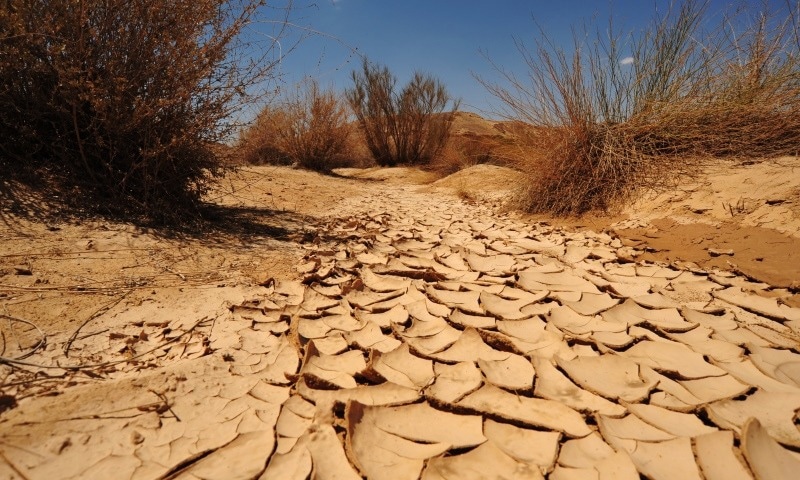The world is currently experiencing a climate crisis. Heatwaves, for example, are becoming increasingly common, longer, and much more intense as a result. In 2022, for instance, heat waves reached alarming levels, breaking records in so many countries, and up to 15,000 people died.
 Cracked earth in Israel. Image Credit: Prof. Uri Roll/BGU
Cracked earth in Israel. Image Credit: Prof. Uri Roll/BGU
Heatwaves (or extreme thermal events) have a negative impact on wildlife. Most animals are adapted to a specific temperature range, and continuous exposure to extreme heat has indeed resulted in the mass deaths of many animal species. Until now, no one has investigated how future extreme thermal events, which are expected to increase and intensify, will affect animals worldwide.
A team of scientists headed by Dr. Gopal Murali (from Ben-Gurion University of the Negev, Israel; currently at the University of Arizona, USA) attempted to address this issue. The research was published in the journal Nature.
Researchers used species data for most land-vertebrate species (33,548 amphibians, birds, mammals, and reptiles) on recent exposure to maximum temperatures to predict the impacts of upcoming extreme temperatures by the end of the 21st century.
The current distribution ranges of species and projections of future climates under various emission scenarios were used. Researchers discovered that, while thousands of species are likely to be exposed to future heatwaves, the number of exposed species is much greater in high-emission scenarios compared to a scenario that lowers human dependence on fossil fuels.
By 2099, under the highest greenhouse gas emission scenario, we estimate two in five species of all land vertebrates will experience extreme thermal events with temperatures beyond their historical levels in at least half their distribution range.
Dr. Gopal Murali, University of Arizona
Dr. Murali adds, “We also found that by 2099 in this scenario, 3,773 species, or 11% of total land vertebrates are likely to face extreme thermal events during most of the year. However, a low-future emissions scenario greatly reduces animals' exposure to heat extremes. In this scenario, just 6.1% of all land vertebrates will have most of their ranges exposed to extreme heat events, and none during most of the year.”
As with other efforts to map human threats across all land vertebrates, we show that amphibians and reptiles are much more at risk. This is probably due to their overall smaller distribution ranges—which in our case may prevent them from escaping to regions within their distribution not exposed to extreme temperatures.
Shai Meiri, Study Co-Author and Professor, Tel-Aviv University
“Interestingly, and as opposed to previous notions, the climate crisis—as manifested by extreme temperature events—is likely to also greatly affect species in the drier regions of the world including deserts, shrublands, and grasslands across North America, Africa, and Australia,” elaborates Shai Meiri.
Our results based on daily temperature prediction show that substantial greenhouse gas emissions cuts will still enable us to minimize the effects of global warming on species survival. Following the Paris Agreement’s goal of limiting average global warming to 1.5oC by the end of the century will greatly prevent thousands of species from being exposed to dangerous levels of extreme heat conditions.
Dr. Takuya Iwamura, Study Co-Author, University of Geneva
Delineating the significant implications of this research for biodiversity conservation, Prof. Uri Roll (from Ben-Gurion University and coauthor of the paper) states, “We need to start considering the impacts of extreme heat events when making conservation and land management decisions. The biodiversity crisis is upon us and many species may go extinct due to various human actions. If unchecked, climate change may soon become a final nail in their coffin. The time to act is now.”
The study was funded by the Israel Science Foundation (Grant no. 406/19).
Journal Reference:
Murali, G., et al. (2023) Future temperature extremes threaten land vertebrates. Nature. doi.org/10.1038/s41586-022-05606-z.